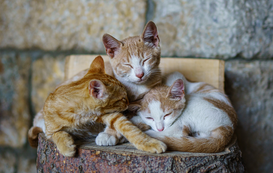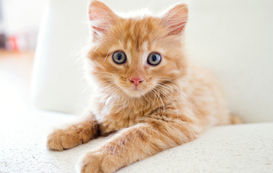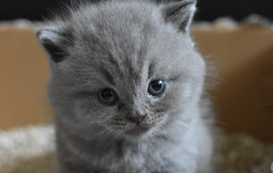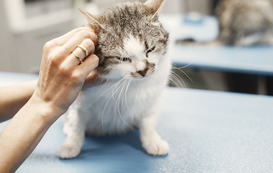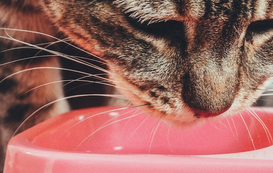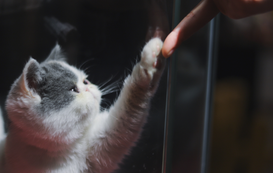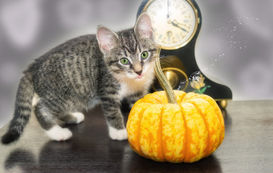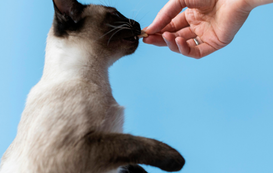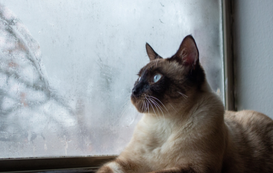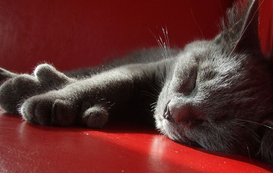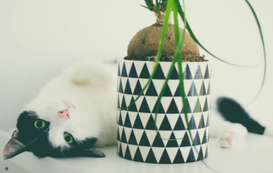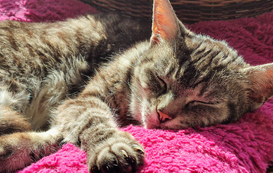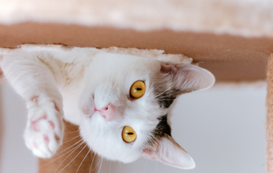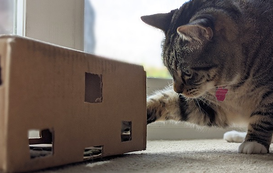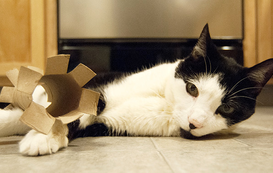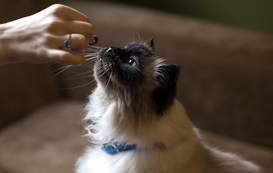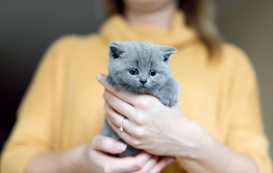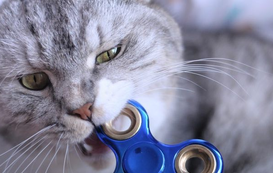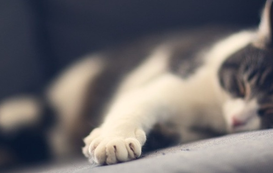- Home
- Cat Sitter Blog
- Cat Behavior
- 6 Ways to Stop Litter Box Issues


6 Ways to Stop Litter Box Issues
The litter box is often considered the primary downside of cat ownership for many cat parents. However, if your cat decides that the litter box isn't the best place to use the restroom, that can be even more challenging.
One of the most common reasons for a cat to be surrendered is litter box issues. No one wants a house that smells bad, the stress of having to find out where that smell is coming from, or the constant clean up when your house has become the litter box. However, there are some fairly easy ways to solve this problem and keep your cat and your cool.
1. Consult Your Veterinarian
If improper urination has suddenly become an issue for your cat, it's a good time to visit your veterinarian for a physical exam. Urinating outside of the litter box can be a sign of health issues or stress. The exam may include a urinalysis or diagnostic tests to determine if the problem is medical rather than behavioral. If your cat is ill or experiencing high levels of stress, your veterinarian can help you work out a treatment plan. For specific medical concerns, you might find our article on Spotting and Treating Cat UTIs helpful.
2. Thoroughly Clean Your Home
Thoroughly clean all of the areas where your cat has missed the litter box. Because cat urine has a very pungent smell and absorbs into things, it's important to use the right cleaning agents. Avoid using cleaners with ammonia in them. Since ammonia is a large part of cats' unique urine scent, it can be confusing or inviting to them if they smell it outside of their litter box. Instead try using a specialized enzymatic cleaner for pet messes. Depending on where the accident happened, you can also try using a homemade recipe including white vinegar and baking soda to clean up. If your cat has marked blankets, clothing, mats, curtains or any other fabric items that you can launder, try adding a quarter cup of white or apple cider vinegar to your wash cycle. (See also: Purrfectly Clean: How to Tidy Up After Your Kitty)
3. Keep Your Litter Box Clean
Cats are very clean creatures by nature. A dirty litter box is very likely to send a cat elsewhere. Imagine if your toilet didn't flush! Many experts suggest scooping litter boxes at least every other day, though every day is much better. It is also often suggested to empty them completely, clean them, and refill with new litter every month. For more fundamentals, check out Litter Box Basics for New Cat Parents.
4. Add Additional Litter Boxes
A general rule of thumb is to have at least one litter box per cat, but ideally, you'll have one more box than you have cats. Cats can be very picky about using a box that already contains urine or feces, especially if the urine or feces is not their own. (5 Litter Box Tips Every Cat Owner Should Know)
5. Change the Litter or the Box
Some cats prefer different kinds of litter. Try changing the litter to see if your cat has a strong preference for a different type. If your litter box has a cover on it, try removing it to see if that helps. If your litter box doesn't have a cover, try adding one. You can also try different sizes of litter boxes. A large cat may prefer a larger litter box.
6. Location Location Location
When you place litter boxes in out-of-the-way places (like the corner of your basement, or inside a cabinet), your cat may not always get there in time. Especially if they're really young or really old. Making litter boxes more accessible for your cat will often mitigate problems.
In Conclusion
Having a cat is not all roses, but we hope that with these tips, your home can smell more like them. Please let us know in the comments if you have any additional tips or tricks for helping your cat use their litter box appropriately.



